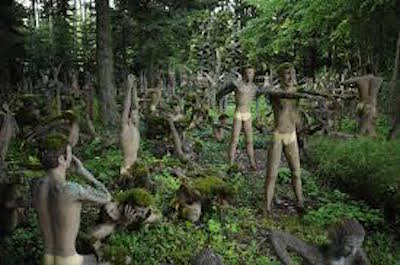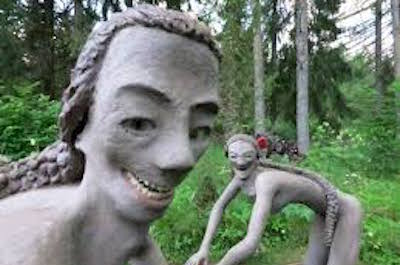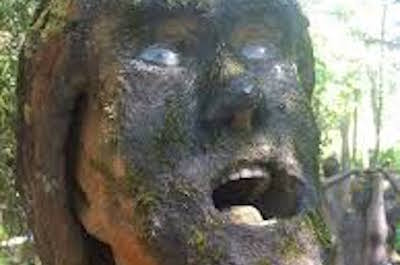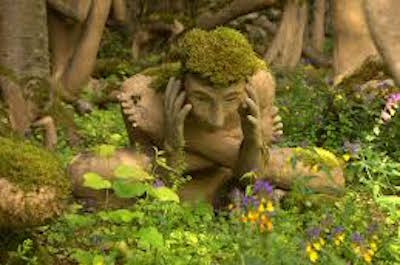Susannah Flicker: Only a Small Portion
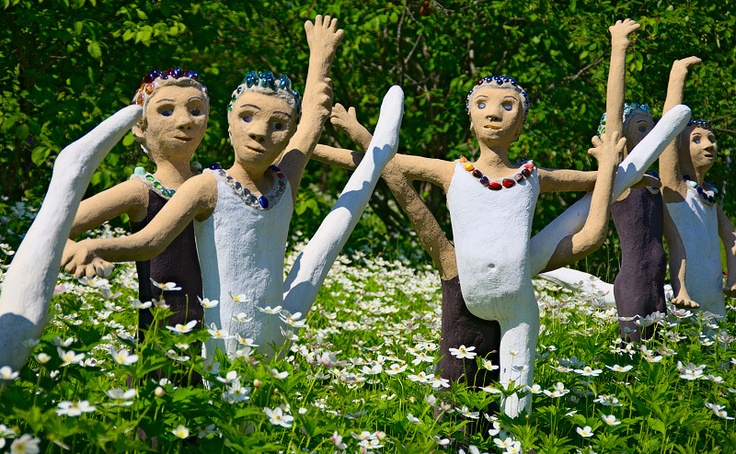
I traveled to Finland in June 2016 to visit my uncle, aunt and cousin. I had not visited Finland since 2004, so I had not had the chance to meet my cousin’s partner and two children. This was my kids’ first international travel experience. It was a really meaningful reconnection for all of us with a part of my family who live far away and an incredible learning experience for my entire family.
There are many things I could write about, but I chose one experience I had in Finland that connects deeply to my practice as an educator. While staying at the home of my uncle in eastern Finland, we visited a sculpture garden near the town of Parikkala, on the border with Russia.
The sculpture park is located at the former home of the artist, Veijo Ronkkonen. He lived in this home with his parents for his entire life, continuing to live there after his parents’ deaths. He was a worker in a local paper mill, and began creating these cement sculptures as a teenager. He was a recluse who never came out of his home when people were visiting the sculpture garden. He received an award in 2007 and did not attend the awards ceremony, his brother received the award for him. He lived alone and died in his home alone, and wasn’t discovered for several days.
Most people who did interact with him in town had no idea he was an artist. He was extremely socially awkward and was a creature of habit who swam at the town pool regularly and visited the same barber for the same haircut every two weeks.
Ronkkonen ended up creating hundreds of sculptures and placing them all around the gardens surrounding his home. Many of the sculptures are barely disguised self-portraits, and reveal a lot about how he experienced the world. There is a section in which all of the sculptures are doing yoga poses, as he practiced yoga himself. After his mother’s death, he began creating only sculptures of children for a number of years. Many of the sculptures incorporate stories from the news, fairy tales, and other information he was processing.
Ronkkonen refused to plan for the park’s future and never wanted to benefit financially from his art or be publicly recognized. After his death, an entrepreneur bought it, preserved it and runs it asking only for donations from visitors.
Visiting this park was fascinating. I experienced it as a beautiful and haunting glimpse into someone’s inner life. It is really difficult to describe in words and I think is better conveyed through images:
I thought a lot about teaching and learning as I contemplated the work of this prolific artist who was never trained and never had any higher education. We often marvel at our students when we see them performing in a theatre production or a concert because another side of them is revealed to us. In my work as a learning specialist, it’s meaningful to be reminded that sometimes what we see of a student in school is only a small fraction of that student’s learning, processing and experiencing of the world. Veijo Ronkkonen is to me an example of this. While not gifted academically or formally educated and despite struggling with social skills and interpersonal relationships, he created an incredible body of artwork that continues to speak to people in powerful ways.

